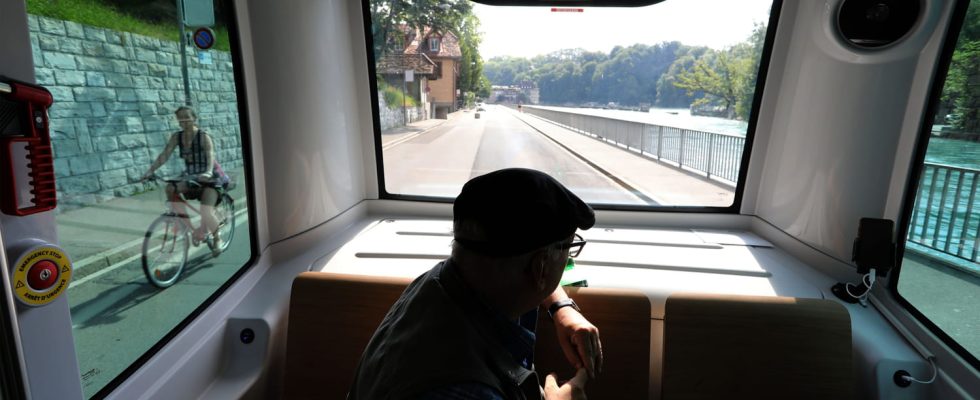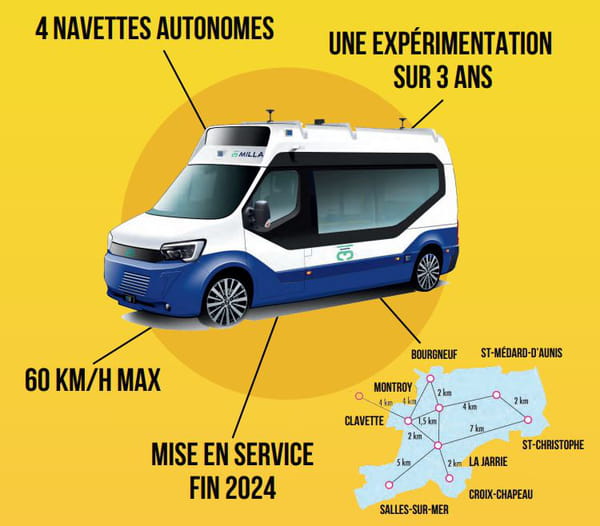An autonomous mini-bus will soon connect several municipalities in France, allowing residents to travel without taking their car… if they trust the robot computer that drives.
How to get around, without a car, in regions or the outskirts of cities poorly served by public transport? This is an essential problem: millions of French people have no other solution than to take their car for short journeys or trips to stations, shops, or to their workplace. Very often, households are forced to own two vehicles, cover the costs of insurance and maintenance and have no alternative solution.
But it could well be that, very quickly, things will change with new solutions. And one of them could well be autonomous shuttles, that is to say without a driver. This is not science fiction: several projects are being studied in several cities across the country, and some are very advanced. Near La Rochelle, it’s even very concrete.
As reported France Blue, eight municipalities located in the third ring of the La Rochelle conurbation will be served by four driverless shuttles, in just one year. The launch of this project was even officially recorded on Saturday October 14 in the Croix-Fort artisanal zone in Saint-Médard-d’Aunis. Everything is ready: the financing, with 13 million euros released, 8 of which come from the State; the technical solution, with the use of the “Yelo Deta” service; the paths.
The shuttle test impressed the local press. It must be said that everything seems simple and secure and what is offered is very attractive. A Renault Master model shuttle, with an electric motor and seating for eight, will circulate in eight municipalities. The pilot ? A computer, then. Isabelle Paulin-Jardin, head of the La Rochelle project for the Parisian company Milla, which developed this shuttle, promises a very high level of security.
At France Bleu, she indicates that four cameras, around ten lidars (laser sensors), a link with several satellites, and a permanent connection with a supervision center are planned. An operator will follow the shuttles in operation and a human “backup” driver will be present in the first weeks of the experiment. The shuttle will travel at a maximum speed of 60 km/h.
The mayor of Saint-Médard-d’Aunis is won over: “It’s very good. We don’t even realize that there is no driver. […] There are nine hamlets and people are systematically forced to take a vehicle, or to be taken, to join a bus line. In the future, someone who needs it will use the application or call, and they will be able to have a shuttle that will come and pick them up at a certain time,” the councilor explains to France Bleu.

